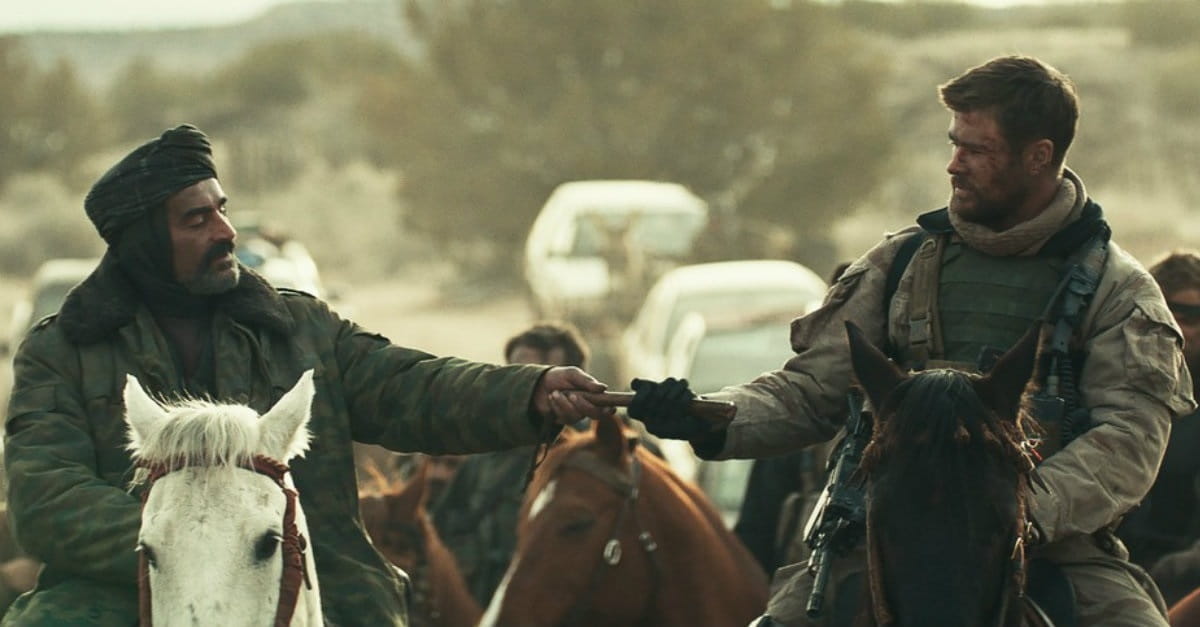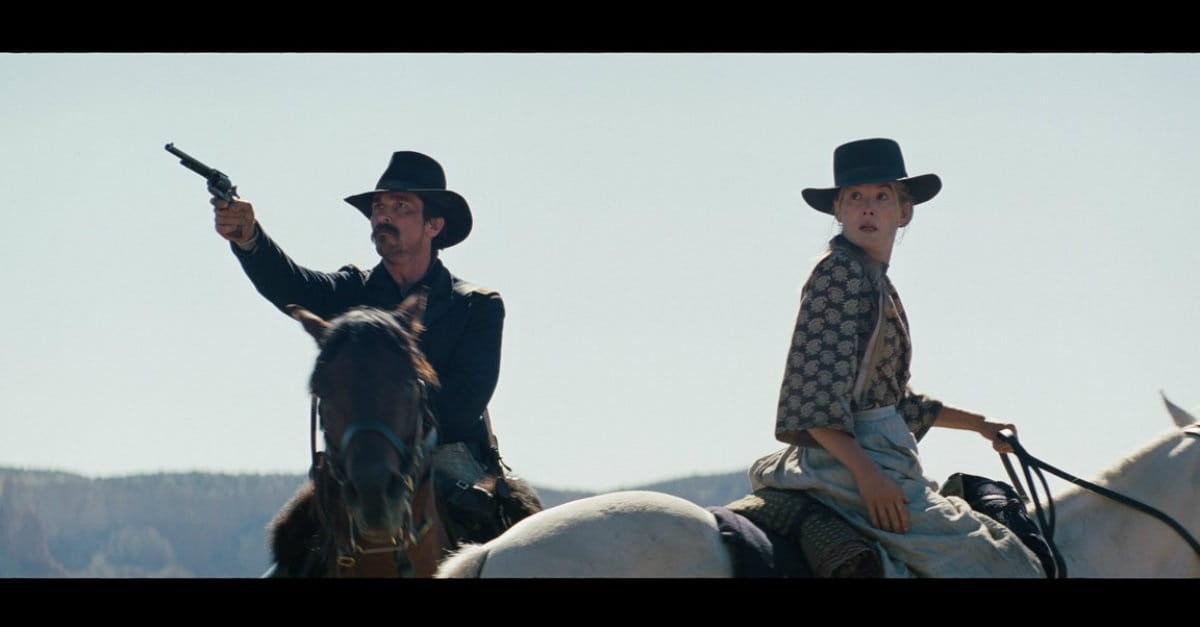Malick's To the Wonder Wrestles with Love Itself
- Jeffrey Huston Crosswalk.com Contributing Writer
- Updated Aug 05, 2013

DVD Release Date: August 6, 2013
Theatrical Release Date: April 12, 2013 (NY/LA), on iTunes and On Demand. Expands nationwide throughout April
Rating: R (for some sexuality/nudity)
Genre: Drama
Run Time: 112 min
Director: Terrence Malick
Cast: Ben Affleck, Olga Kurylenko, Javier Bardem, Rachel McAdams
"Your intellect may be confused, but your emotions never lie to you." – the late Roger Ebert, on judging a film’s value.
Ebert’s axiom is a great standard, and one that people would do well to follow when attempting to appreciate films that challenge, which are abstract, and are often too quickly dismissed. It's especially true for movies by Terrence Malick (The Tree of Life, The Thin Red Line). His latest is no different, and may even be his most quintessential (for better and worse).
To The Wonder wrestles with Love itself – not as a concept or idea but as an entity. It doesn’t muse about love but rather to it. The title initially seems to imply a journey toward some enlightened state of being, but by film’s end it reads more like the top of a letter addressed to The Being.
"Husbands, love your wives, just as Christ loved the church and gave himself up for her." – Ephesians 5:25
Early on a priest reads this verse from the pulpit, but rather casually. Malick does not bring any particular emphasis to the reference other than it being audible, but in hindsight its citation comes to serve as a thesis statement from which to discern what he’s really up to here. To The Wonder is a film about love, as told by brides.
These brides are represented in various forms and at differing stages. One begins in courtship, following a divorce, and yearns for union – one that will finally be true and lasting. Another bride shares a similar history, though the details are different. One eventually remarries. The third is a priest who, as a member of the church and follower of Jesus, is of the Bride of Christ.
Each of these brides loves their bridegrooms but also struggle to understand them ("What is this love that loves us? That comes from nowhere. From all around"). As a consequence, intimacy is often elusive despite the deep mutual longing for it. Malick’s sympathies clearly lie with the brides. Their struggles, doubts, and fears are his, as is their unwillingness to completely reject love even as temptations arise to do so.
The film opens in France where Neil (Ben Affleck, Argo), an American, falls for Marina (Olga Kurylenko, Quantum of Solace), a Ukrainian divorcee living in Paris with her 10-year-old daughter. Their love is joyful, magical, undeniable. They want to spend their lives together, so she follows him back to his native rural Oklahoma.
The bliss slowly gives way to tensions, ones difficult to articulate. They seem to rise not from circumstance but rather the kind of intangible differences of which their very existence is more confusing than clarifying. The presence of Jane (Rachel McAdams, The Vow), a woman from Neil’s past (also a divorcee), further clouds feelings and desires that once seemed not just clear but pure.
For the priest (Javier Bardem, Skyfall), his initial stages of divine bliss are not seen but assumed as we meet him in the depths of his spiritual divide. His heart has become hard; he cannot feel God’s presence. He has lost the gift of joy. "How long will you hide yourself?" he prays – a question Marina essentially asks of Neil as well, though in different ways.
When answers don’t come, emotions become volatile. "I love this feeling, even if it makes me cry sometimes," Marina confesses, "the conviction that I belong to you." But when each bride is unable to get clarity from the respective bridegroom, they feel abandoned – even betrayed. Love itself is then questioned, doubted, and an all-consuming grief opens the door to other suitors.
As for Neil, he largely serves as a cipher for both Marina and Jane to express their longings and despair. While he does serve as one narrative's literal groom, Malick does not construct or play him as a direct Christ metaphor, or imply by extension that the priest's Lord is as flawed as Neil. He simply uses each story to inform the other, much in the same way Scripture uses marriage metaphors. We better understand the purpose and purity of marriage (and our temptations toward infidelity in all its forms) when we understand the fidelity of Christ, our relationship to him and his to us.
Cinematically, Malick employs his patented auteurism. Impressionistic in nature, it’s driven more by internal ponderings than external plotting (dialogue is minimal, poetic inner monologues pervasive). Malick doesn’t tell stories, he creates moods – but his goal remains the same: to explore ideas. Most films with ambition want to make us think, then contemplate. Malick’s want us to meditate, then contemplate.
If all that sounds very artsy, well, it is. That’s why his films are acquired tastes for most, even polarizing critics from time to time. Yet for all their soulful intimacy, they also boast majestic visuals, complex themes, and big ideas. They are highly ambitious. Some view that as admirable while others see it as indulgent. Ironically, Malick’s fans and critics may find themselves agreeing that To The Wonder is a little bit of both.
His use of symbolism captures these extremes. Clever examples include Neil’s occupation (a geologist who makes sure water basins at Natural Gas drilling sites stay clean, a Christ-like symbol of restoring creation as mankind relentlessly breaks it) and a friend of Marina's who tries to lure her back to the gypsy life of Europe (i.e. infidelity). Others are surprisingly on-the-nose (a noisy intersection "crossroads" comes to mind) or too opaque (meteors shooting across the sky).
Stylistically, you won’t see more stunning images in a movie theater all year, or be provoked by thoughts as philosophically rich – but you can only watch so many meticulously-composed visuals of gorgeous people set to classical music and hushed whispers before some start coming off as a pretentious perfume ad. To The Wonder has a unique and unfortunate ability to shift from artful to painful and back again.
Thankfully, Malick’s core ideas, conflicts, and yearnings resonate so truly and sincerely that it makes the occasional weight of self-import easy to forgive. Earnest though it may be, To The Wonder is Malick at his most intentionally pastoral. Indeed, he’s doing more than pastoring us; he’s discipling us from his own struggles. He ruminates on the desire and need for love, how it grounds us, gives us a bearing for life, for our souls. How its absence causes confusion, pain, chaos, and loss.
In the end, Malick’s not offering answers but rather a conviction: keep praying. When all else fails, keep praying – not to receive clarity but to exercise faith, practice submission, and find Christ in the least of these. For the nature of Love is not just a feeling, it’s a duty and a command.
CAUTIONS:
- Drugs/Alcohol: None
- Language/Profanity: None
- Sexual Content/Nudity: Some moments of sexuality and nudity. A woman’s nude back is seen, then breasts. A couple, both topless, in bed kissing. A man kisses a woman who wears lingerie, then begins to kiss down her shoulders and body. A man and woman together under bed covers, undressed. A woman takes her shirt off while in a car; breasts are briefly seen. A man begins to undress while kissing and caressing a clothed woman. A man and woman begin to kiss passionately while on a bed, about to commit adultery. A woman in a bikini, swimming. A woman walks around a room in a towel. A woman’s nude back is seen as she prepares a bath.
- Violence/Other: A couple gets into an intense physical fight; they struggle, things are thrown.
Publication date: April 12, 2013














